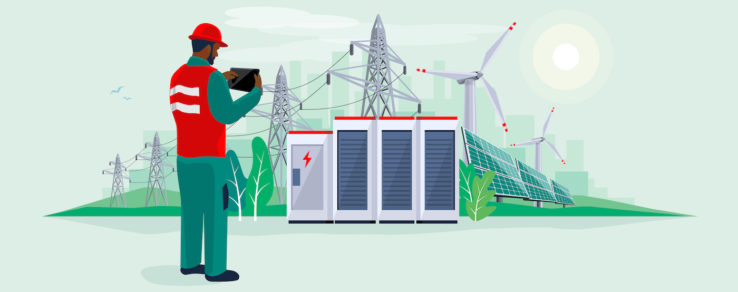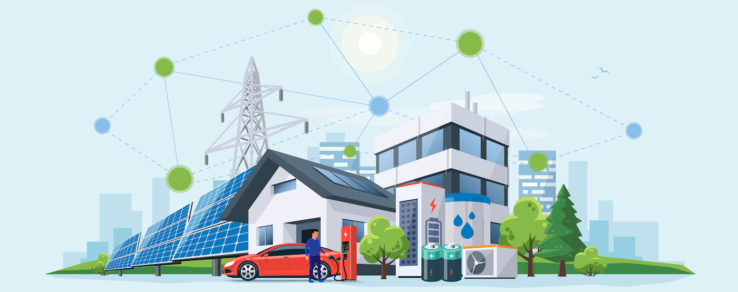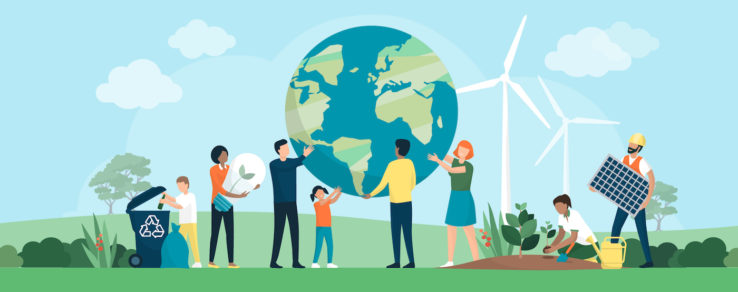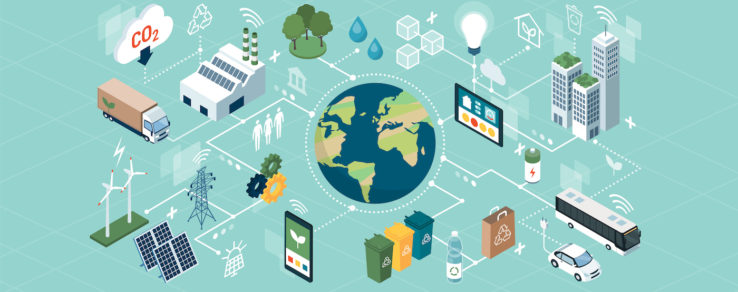Dan Reicher, former U.S. Assistant Secretary of Energy, has long espoused a theory (often called the Reicher Triangle) that in order to rapidly deploy clean energy, you need three elements: technology, policy and finance. The U.S. has steadily developed clean energy technologies for many years and clean technology financing has reached an all-time high. The Biden administration is now delivering the missing policy support along with additional financing.
The new administration has a very different perspective on renewable energy. Upon winning the election, President Joe Biden promised to take numerous actions involving renewable energy in support of his climate change agenda. Some actions are defensive in nature, reversing the previous administration’s policies; most actions are offensive in nature, establishing new legislation. Many of the actions have already been put into play via Executive Order (EO), but a few have not.
Reversing existing policy:
- Establish aggressive methane pollution limits for new and existing oil and gas operations (EO 14008 Sec. 217; EO 13990 Sec. 2)
- Implement rigorous new fuel economy standards toward 100% zero-emission vehicles (EO 13990 Sec. 2)
- Require zero-emission vehicles for federal, state, local and tribal government fleets, including vehicles of the United States Postal Service (EO 14008 Sec. 205)
- Temporary moratorium on oil and gas leasing in the Arctic National Wildlife Refuge (EO 13990 Sec. 4)
- Banning new oil and gas leasing on public lands and waters (EO 14008 Sec. 208)
- Eliminating fossil fuel subsidies (EO 14008 Sec. 209)
- Revoking the March 2019 Permit for the Keystone XL Pipeline (EO 13990 Sec. 6)
Establishing new policy:
- Double U.S. offshore wind capacity by 2030 (EO 14008 Sec. 207)
- Achieve zero-carbon electricity generation by 2035 (EO 14008 Sec. 205)
- Introduce legislation to achieve economy-wide net-zero emissions no later than 2050 (EO 14008 Sec. 201)
- Rejoin the Paris climate agreement (EO 14008 Sec. 102)
- Increase renewable energy deployment on public lands (EO 14008 Sec. 207)
- Directing infrastructure planning to accelerate transmission projects and clean energy buildout (EO 14008 Sec. 213)
- Make environmental justice a priority across all federal agencies (EO 14008 Sec. 219-223)
Policy not yet enforced:
- Establishing ARPA-C, a research agency focused on advancing the energy transition. ARPA-E, an existing program focused on clean energy technology, is offering $100 million in 2021 funding.
- Reducing the carbon footprint of the U.S. building stock 50% by 2035 through incentivizing beneficial electrification, efficiency upgrades and on-site clean power generation (4 million commercial and 2 million residential buildings).
- Invest $400 billion over 10 years to achieve clean energy innovation breakthroughs.
- Encourage the deployment of more than 500,000 new EV public charging outlets by the end of 2030.
- Enact legislation requiring public company polluters to bear the full cost of their climate pollution. EO 13990 does mention the intention “to hold polluters accountable” and requires agencies to estimate the full social costs for carbon, nitrous oxide and methane emissions but falls short of implementing any penalty system.
Shifting winds of zero-carbon generation for energy utilities
Reducing the availability of fossil fuels and requiring zero-carbon electricity generation will greatly accelerate the domestic wind, solar and electric vehicles industries. It will also leverage existing carbon-free sources like nuclear power and hydropower. State renewable portfolio standards (RPS) goals will also drive wind and solar deployment. Energy-storage technology development will need to accelerate to enable use of increased intermittent renewables like wind and solar.
Here are six predictions for the U.S. renewable energy sector in 2021:
- Expect carbon taxing (and possible fines) on emitters of greenhouse gasses (GHG). Clean renewable energy is more economically feasible when GHG emitters become more expensive.
- There will be a record issuance of debt for sustainability projects, including activity-based green bonds, social bonds, green loans, sustainability-linked loans and sustainability bonds.
- Annual solar installations will exceed 23 GW in 2021 compared to 19 GW in 2020. The Solar Energy Industries Association (SEIA) is lobbying for a delay in the phasedown of the solar investment tax credit (ITC). The SEIA goal is to reach 20% electricity generation from solar by 2030. Wood Mackenzie predicts a record-setting 2021 for commercial photovoltaic generation at nearly 2.4 GW, for residential PV at 3.5 GW, and for utility PV at around 17 GW.
- Wind additions will jump from 17 GW in 2020 to 21 GW in 2021.
- 2021 will be a breakout year for electric vehicles with over one-half million EVs sold in the U.S., 70% more than in 2020. Expect vehicle emission standards to be lowered and fuel efficiency minimums to be raised.
- Energy storage deployments will spike dramatically in 2021, from 1.3 GW in 2020 to over 3.8 GW, driven by large-scale utility procurements. Front-of-the meter deployments will represent 85% of the market. The SEIA supports standalone energy storage systems qualifying for the ITC.
Some of these predictions would have come true under the previous administration, but President Biden and his team are focused much more on renewable energy during his term. As this new administration pushes forward to achieve and exceed goals, time will tell just how powerful the triple-threat combination of technology, policy and finance really is. After all, the Reicher Triangle is a powerful force that should not be underestimated.




